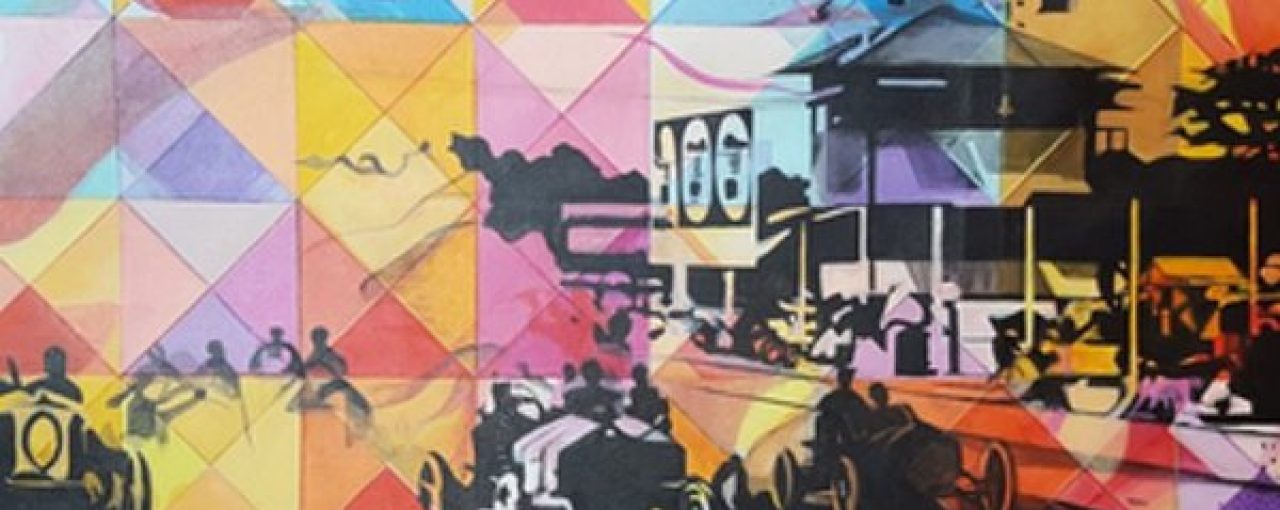Painting over Digital Collages
By Richard Malinsky, Arts Editor
 Lisa Sears is a Midwestern artist interested in historical artwork, architecture, and feminism—all of which find their way into her imagery. Her website focuses on her unique process of carefully planning and designing her images in Photoshop, creating a mechanical grid over the composition, building a canvas to match that scale, then slowly and painstakingly reproducing the image in paint.
Lisa Sears is a Midwestern artist interested in historical artwork, architecture, and feminism—all of which find their way into her imagery. Her website focuses on her unique process of carefully planning and designing her images in Photoshop, creating a mechanical grid over the composition, building a canvas to match that scale, then slowly and painstakingly reproducing the image in paint.
The finished paintings are acrylic on canvas based on layered digital collages. The layering is a transformative process and each step is documented so the viewer can witness the process as it comes to life.
“Speedway 1909,” commissioned by the Indianapolis Art Council and Indianapolis Motor Speedway, consists of four digital layers—an illustration of the first racer on the track in 1909, state flower, colorful triangles, and the words “Welcome Race Fans.” The painting in progress, as well as the recently finished work, are shown below.
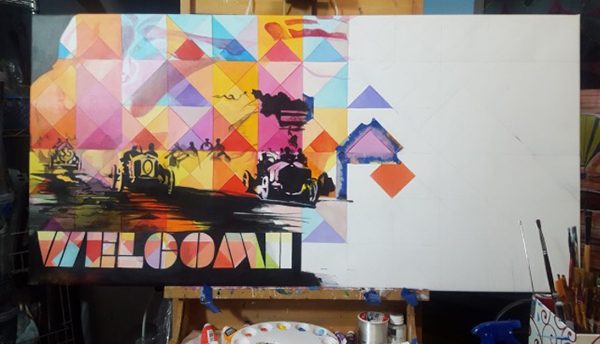
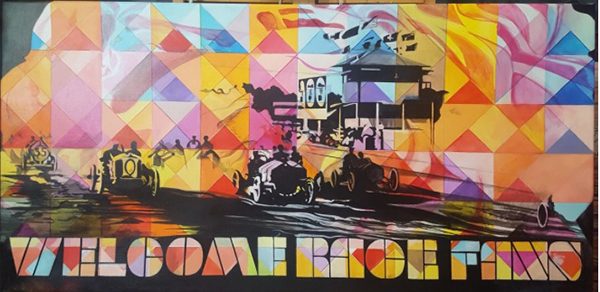
The paintings appear smooth, with essentially no texture or expressive brushstrokes, and vary only slightly from the original digital composition. In fact, she says people frequently think they are digital prints. Which makes me wonder why she hasn’t considered the digital compositions the finished work. Why make the paintings an illustration of a photograph?
Sears’s interest in geography, architecture, and history are evident in her composition “Indiana SightGlass.” She creates a wonderful network of horizontal and vertical linear forms from overlapping images of an 1830 map of Indiana and the Indiana state flag, with an overall third layer from the computer program Pixlr Express called Sightglass. The overall composition works well in the square format.
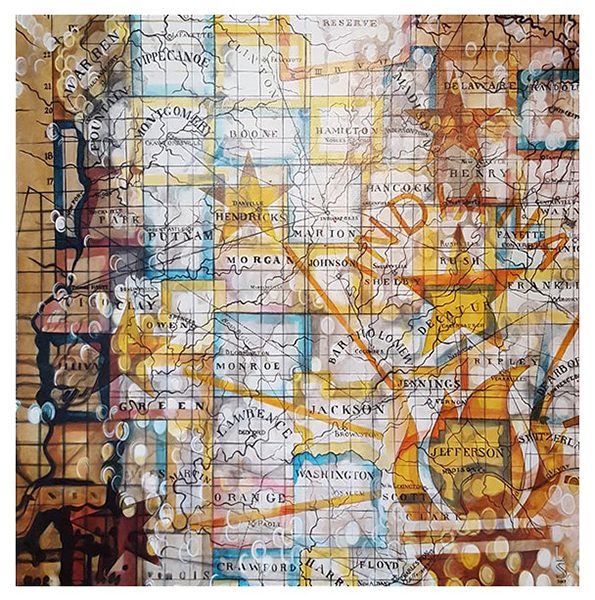
While her composition titled “Principio Obstate” may not be the first time we’ve seen this American icon turned upside down in our turbulent social times, Sears has brought some new visual concepts to this image. First, she uses a historical photograph of the statue under construction in France, and then cages her in scaffolding, suggesting her promise of Liberty is in need of repair or still being built. Lastly, the dominant image in the background is right side up, creating hope. She states: “This layer represents the beauty of democracy. There is always something to balance power and speak for the people.”
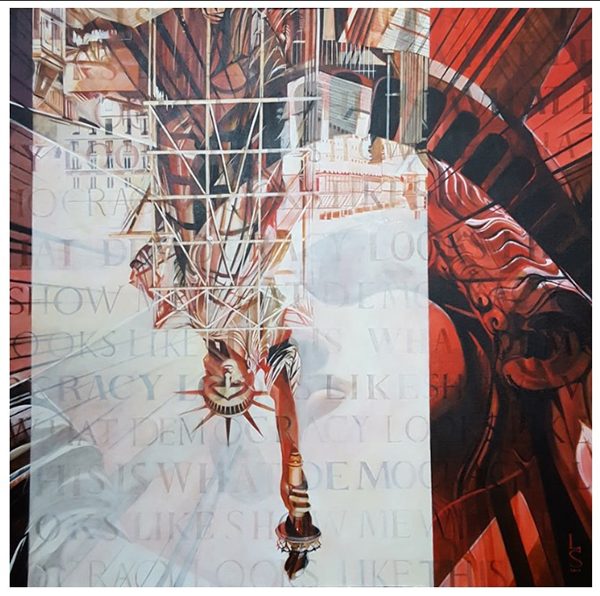
Her foray into installation work demonstrates an interest in color as dimension. It began with scraping the dry paint off her palette and placing it into clear plastic cups. Holes were drilled into the cups and glued together in pairs of two which are stringed together in strands of fourteen units and suspended from above. The final work is a kaleidoscope of color that can enlarge in width to fit any space.

Lisa Sears teaches art in a local high school in Indianapolis by day and paints by night. She is well qualified, with a Bachelor of Fine Art in studio work and a Bachelor of Art Education with a minor in art history.
Copyright 2018 Woven Tale Press LLC. All Rights Reserved.

